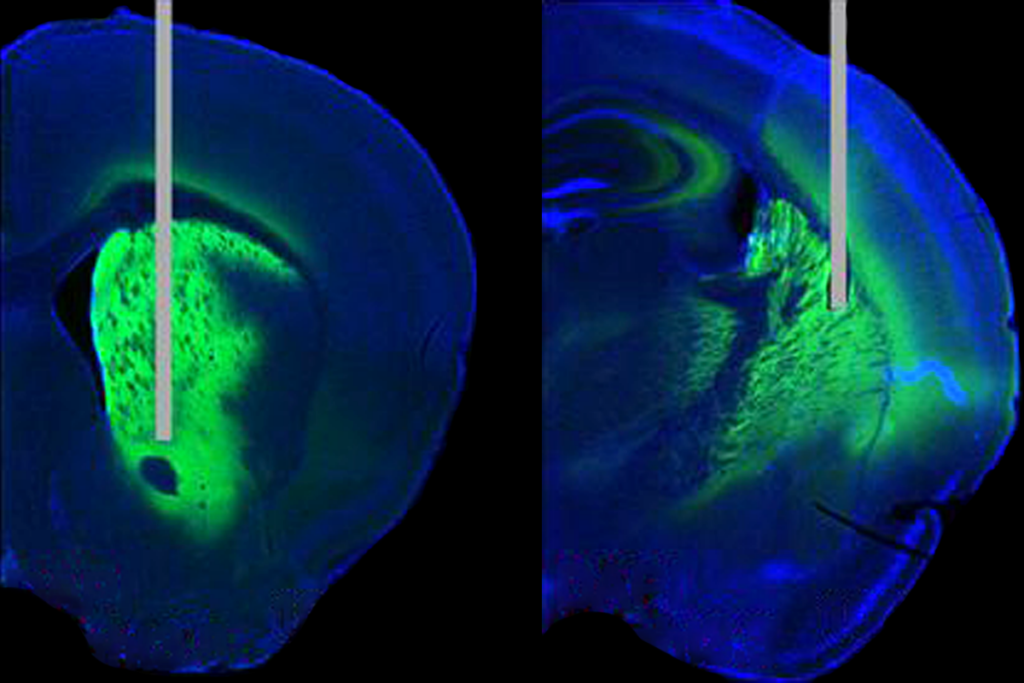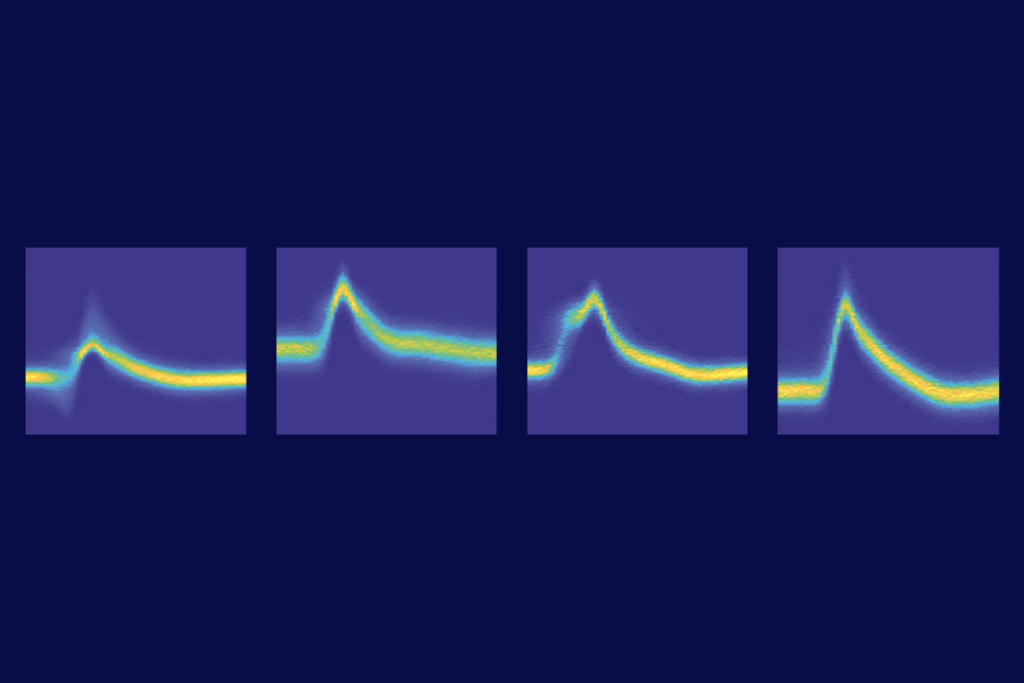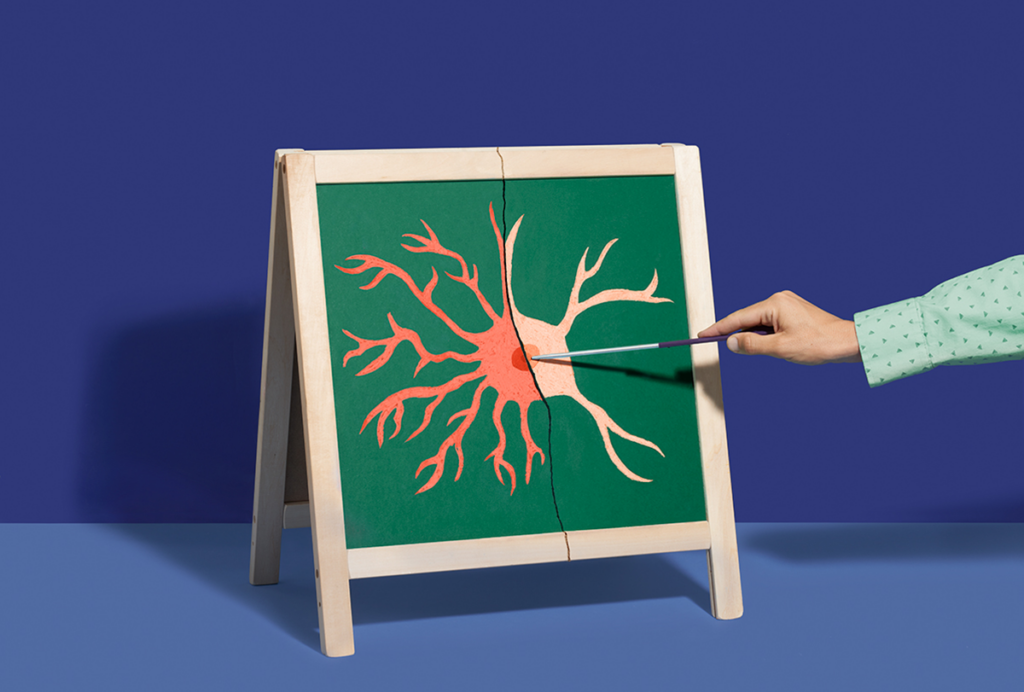While analyzing high-speed video of mouse responses to a poke in the paw, Justin Burdge noticed a problem: Delivery of the stimulus was all over the place.
In the standard assay, researchers crouch beneath a platform to administer the poke and then observe how long it takes the animal to withdraw its paw. The addition of high-speed video made it easier to track subtle changes in mouse behavior, Burdge says, but it also revealed how inconsistent the poking could be, even from the same researcher.
“Sometimes the stimulus only hit the edge of the paw and glanced off. Sometimes it accidentally hit the mouse’s belly or just didn’t make good contact,” says Burdge, a Ph.D. candidate in Ishmail Abdus-Saboor’s lab at Columbia University. “And then even when it did make contact, very often the stimulus came in at different angles and went to different heights and came in at different speeds.”
So the lab set out to fix that. They developed an automated robot that can deliver mechanical stimuli with consistent force and greater accuracy. The team described the device in a preprint posted on bioRxiv last week.
Their “automated reproducible mechano-stimulator,” or ARM, device is made of multiple linear stages so that the stimulus and a camera can move in tandem across three dimensions. A researcher can control the ARM from another room and switch the stimulus from the stiff filaments, called von Frey filaments, to a cotton swab, a pin or a brush.
The poking paradigm measures mechanical allodynia, or sensitivity to stimuli that aren’t typically painful, which is a symptom of chronic pain.
“Chronic pain is a problem that is both deeply personal and society-wide,” says Abdus-Saboor, associate professor of biological sciences. “We are driven by the goal of finding new and better ways of managing pain, but the absence of reliable and reproducible methods for studying and measuring pain has made that difficult, not just for us but for the entire research community.”
Another team, led by Steven Prescott, senior scientist at the Hospital for Sick Children, developed a similar device last year. The Prescott device is fully automated and can deliver mechanical and thermal stimulation as well as optogenetic stimulation to peripheral neurons under the skin.
B
oth devices aim to solve several problems with behavioral pain studies: reproducibility, accessibility and behavioral variability.“It’s a little bit ironic, because the whole reason that von Frey is so popular in the first place is because it has less variability than everything else,” says Jeffrey Mogil, professor of pain studies at McGill University, who was not involved in the creation of either device. But in practice, he adds, the amount of applied force does vary, and it can be difficult to precisely target the same area of the paw, which is important for some nerve injury models.
This means there is variability among researchers in a lab but also between labs, Prescott says. “If you’re going to apply stimuli by hand and going to measure responses by eye, that is a very subjective process,” he says, which hinders the ability to pool data. “Whereas if you could standardize and pool that data, you could hopefully mine it for more information.”
The analog approach to behavioral pain studies is also “very ergonomically unfavorable” for the researcher, Abdus-Saboor says. “A researcher is bent over and needs to be steady, aim and poke a thin filament at an animal’s paw,” he says. “For a given experiment, this could be hours over multiple days. I think everyone in the field who’s done these complains about how taxing it is on your body.”
This effort is uncomfortable for able-bodied researchers, Abdus-Saboor says, and it can completely exclude disabled researchers from conducting pain studies. “We’ve experienced this in our own lab, where some researchers before the ARM were not able to participate, but now after the ARM, they could participate just like everyone else.”
The approach may also be better for laboratory animals. More consistent data collection reduces the number of trials and animals needed for a single study, Abdus-Saboor says. Plus, both devices make it possible to conduct behavioral testing without the researcher physically being in the room with the animals.
In a recent review, Mogil analyzed 20 years of behavioral data from his own lab and found that the researcher performing the test had a greater effect on results than did the mouse genotype. In 2014, Mogil reported that the smell of male researchers stresses mice out more than that of female researchers and can skew behavioral results.
“I’m a big fan, as a general concept, of getting experimenters out of the room,” Mogil says.
Prescott and Abdus-Saboor both say they hope their devices increase the rigor of behavioral pain data collection and analysis. Abdus-Saboor’s lab is accepting preorders for its device, and Prescott’s lab says it hopes to have its version available to purchase in a few months.




